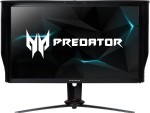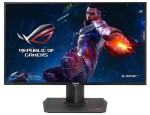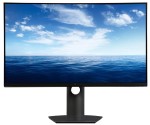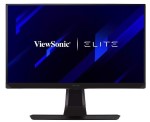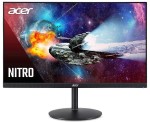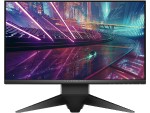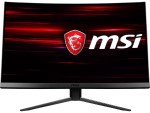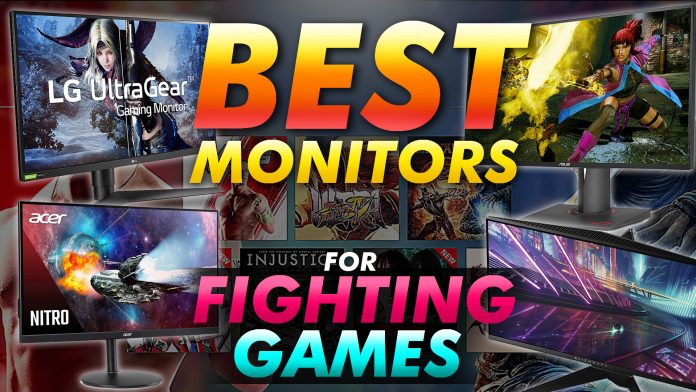
If you’re into fighting games like Mortal Kombat 11 and Soulcalibur VI, you should know that the monitor plays an important role in your gameplay experience. Having a vivid display is great for eye candy, but it has little impact on your gameplay.
With fighting games in particular, low input lag is necessary. After all, you can’t expect to be competitive with a display that takes forever to register your commands!
In this guide, we consider some of the best monitors for fighting games that you can get today. These monitors offer a blend of low input lag, high refresh rate, and quick response time for a performance that is optimized for your type of games.
Regardless of your budget, rest assured that there is a monitor on this list for you.
| Preview | Product | Size | Resolution | Price |
|---|---|---|---|---|
Gigabyte AORUS FI27Q-P G-Sync Compatible Frameless Gaming Monitor | 27" | 1440p | ||
| 27" | 2160p | |||
| 27" | 1440p | |||
| 27" | 1440p | |||
| 27" | 1080p | |||
| 27" | 1080p | |||
| 25" | 1080p | |||
| 24” | 1080p |
Contents of this Page
Gigabyte AORUS FI27Q-P
Best G-Sync Monitor for Fighting Games
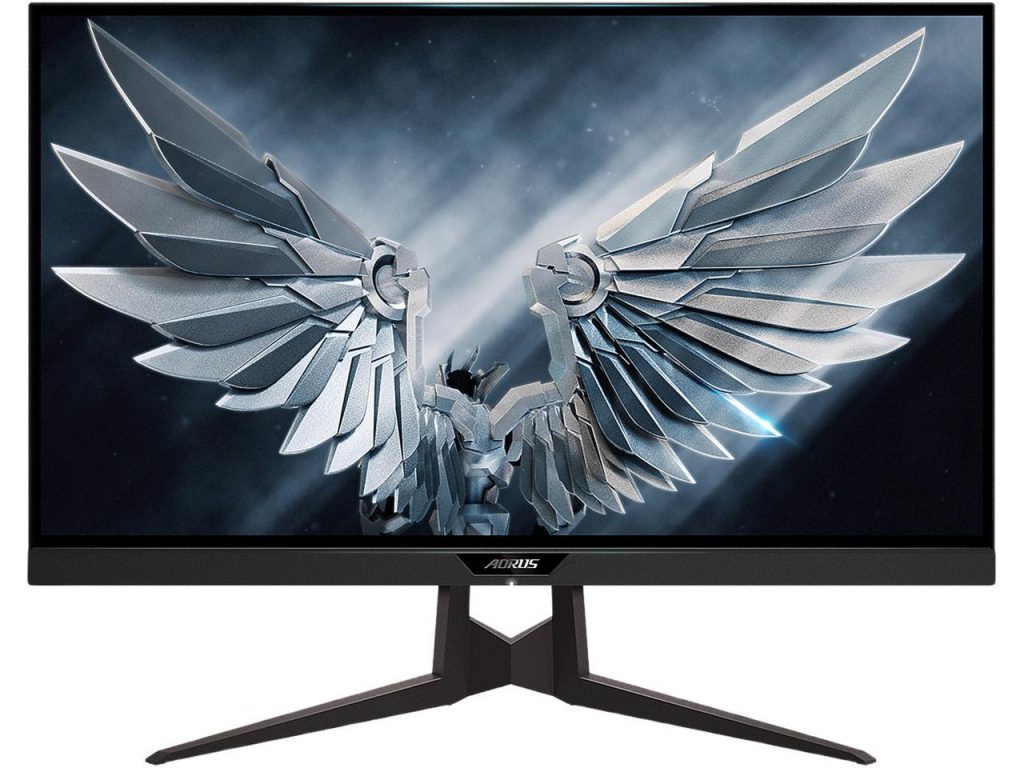
| Panel Technology | IPS |
| Screen Size | 27” |
| Display Resolution | Quad HD (2560×1440) |
| Refresh Rate | 165Hz |
| Adaptive Sync Technology | NVIDIA G-Sync AMD FreeSync (48Hz-165Hz) |
| Ports | 1 x DisplayPort 1.4 2 x HDMI 2.0 |
| Response Time | 1ms |
| Input Lag | 4ms |
The Gigabyte AORUS FI27Q-P is an excellent option for fighting game enthusiasts who want a mix of outstanding design and performance. This monitor comes with a gorgeous IPS panel that allows for wide color gamut along with consistent and vibrant images and a factory-overclocked refresh rate of 165Hz.
The FI27Q-P uses motion blur reduction technology to achieve a blazing-fast 1ms MPRT response time. This technology uses backlight strobing to reduce perceived ghosting during fast-paced moments, albeit sacrificing maximum brightness. This monitor also has a flicker-free backlight and an integrated low-blue light filter to avoid eye fatigue and headaches during hours-long gaming sessions.
RELATED: Best Monitor for Xbox One X
The on-screen display menu of the FI27Q-P is well-organized and provides plenty of display customization options. Navigating through the menu is a breeze using either the five-way joystick or the desktop application. From the on-screen menu, you can switch between the response time overdrive modes, namely Picture Quality, Balance, and Speed. We highly recommend you use Speed to reduce as much ghosting as possible. This monitor also offers Black Equalizer 2.0 to significantly improve the visibility of objects in dark environments without overexposing bright areas.
In terms of ergonomics, the FI27Q-P has a robust and versatile stand that can be height adjusted, swiveled, pivoted, and tilted. The overall build quality of the display feels solid and premium with high-quality materials and ultra-thin bezels.
The FI27Q-P is easy to recommend if you have a considerable budget and want the best performance you can get. Otherwise, you might want to look at the other monitors on this list if you’re looking for a more cost-effective option.
Acer Predator XB273K
Best 4K Monitor for Fighting Games
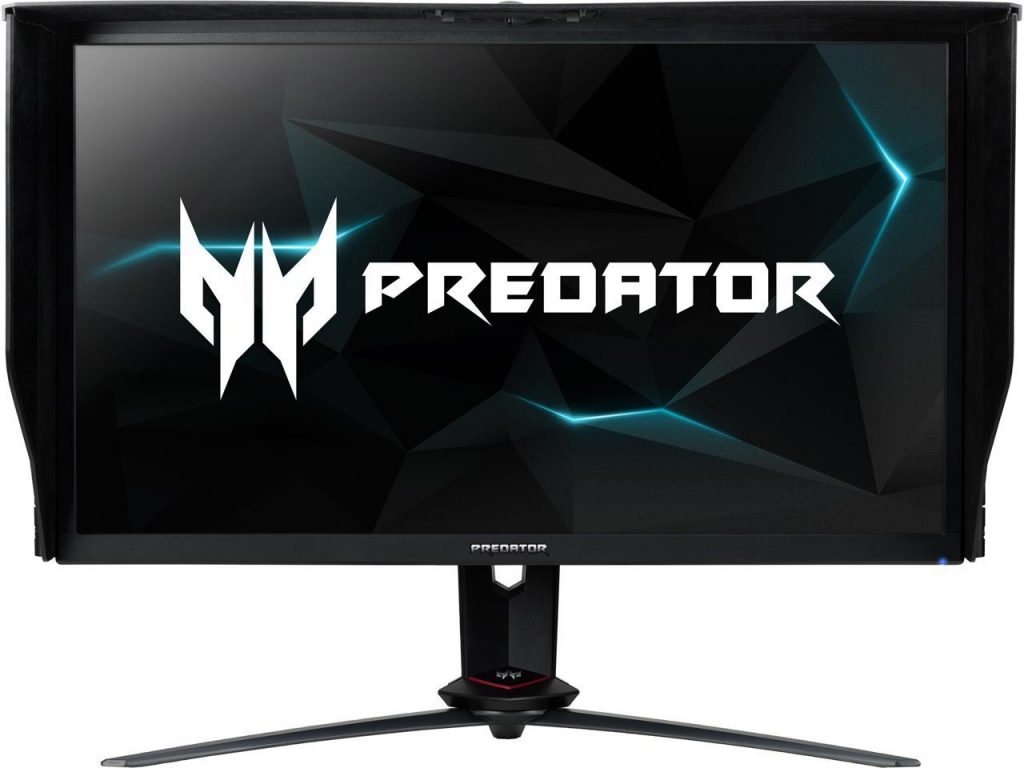
| Panel Technology | IPS |
| Screen Size | 27” |
| Display Resolution | 4K (3840×2160) |
| Refresh Rate | 120Hz (144Hz OC) |
| Adaptive Sync Technology | NVIDIA G-Sync |
| Ports | 1 x DisplayPort 1.4 1 x HDMI 2.0b |
| Response Time | 4ms |
| Input Lag | 5ms |
The Acer Predator XB273K is a 4K 120Hz monitor that provides crystal-clear image quality paired with exceptional gaming performance. It has the highest display resolution among all the options on this list, effectively eliminating common issues in lower resolution like aliasing or staircase effect.
You can even overclock the XB273K to 144Hz refresh rate through the on-screen display menu. This setting will limit the color output from RGB 4:4:4 to YCbCr 4:2:2. This compression will make text and certain elements on your desktop blurry, but it won’t be noticeable in fighting games. Furthermore, the backlight on this monitor is flicker-free and has an integrated low-blue light filter to prevent headaches and eye strain during prolonged use.
The on-screen display menu is easy to navigate through the joystick positioned behind the monitor. Above the joystick, there are four hotkeys, three of which you can assign for specific functions (picture mode, brightness, volume, overdrive, input source, etc.). The XB273K also has built-in sensors that automatically adjust brightness and black levels based on ambient lighting.
In terms of gaming performance, the XB273K has a response time speed of 4ms. While it slightly trails the 27GL850-B in this regard, it is fast enough to eliminate all trailing left behind fast-moving objects for a smooth visual experience.
The thick matte black bezels on the XB273K gives it a sturdy design and appeal. This monitor doesn’t have a pivot option, but it can be height-adjusted, swiveled, and tilted for ergonomic versatility. It also has two integrated speakers that sound decent but are painfully treble-heavy. There’s also an active-cooling fan that stays quiet while effectively keeping the display cool.
Asus ROG Swift PG279QZ
Best Premium Monitor for Fighting Games
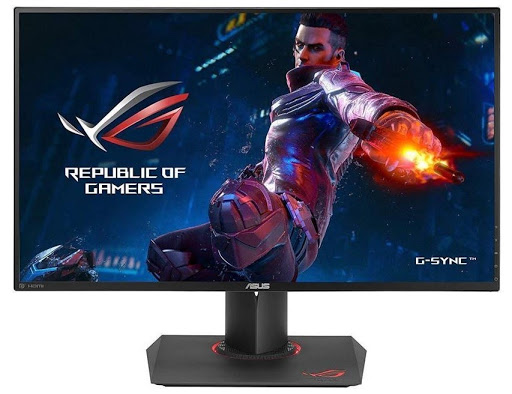
| Panel Technology | IPS |
| Screen Size | 27” |
| Display Resolution | Quad HD (2560×1440) |
| Refresh Rate | 144Hz (165Hz OC) |
| Adaptive Sync Technology | NVIDIA G-Sync |
| Ports | 1 x DisplayPort 1.2 1 x HDMI 1.4 |
| Response Time | 4ms |
| Input Lag | 4ms |
The Asus ROG Swift PG279QZ is one of the fastest Quad HD 144Hz IPS gaming monitors you can get today. While it can’t quite compete with the LG 27GL850-B in performance and pricing, it has a bunch of features that appeal to gamers.
The PG279QZ has an astonishing pixel density of 108 PPI to give you plenty of screen space without sacrificing clarity and sharpness. This monitor has a response time speed of 4ms paired with 4ms of input lag, suitable for any of your favorite fighting games. Even at 144Hz, the PG279QZ can deliver a responsive gaming experience without trailing on fast-moving objects.
One of the features that separate the PG279QZ from the 27GL850-B is the ability to overclock the refresh rate up to 165Hz through the on-screen display menu for added motion clarity. This monitor is also equipped with NVIDIA Ultra Low Motion Blur, a backlight strobing technology that allows for enhanced aiming in first-person shooters. Moreover, this monitor has eye care features like the flicker-free backlight with an integrated low-blue light filter.
Behind the PG279QZ, there is a joystick for on-screen display menu navigation along with four buttons, two of which can be used as hotkeys for the GameVisual and GamePlus features.
GamePlus consists of in-game tools such as customizable crosshairs and an FPS counter while GameVisual contains a set of pre-calibrated picture presets for specific game genres (first-person shooters, role-playing games, and racing simulation, etc.).
The design of the PG279QZ is another advantage it has over the 27GL850-B. This monitor has a wide range of ergonomic options such as height adjustment, swivel, tilt, and clockwise pivot. It also has a cable management system and air vents to prevent the panel from overheating.
All in all, the PG279QZ is an excellent gaming monitor. It offers extra bells and whistles that aren’t found in other displays, but it is significantly more expensive.
Dell S2719DGF
Best 144Hz Monitor for Fighting Games
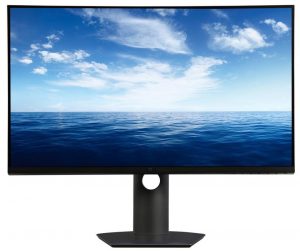
| Panel Technology | TN |
| Screen Size | 27” |
| Display Resolution | Quad HD (2560×1440) |
| Refresh Rate | 144Hz (155Hz OC) |
| Adaptive Sync Technology | AMD FreeSync (40Hz-155Hz) |
| Ports | 1 x DisplayPort 1.2 1 x HDMI 1.4 1 x HDMI 2.0 |
| Response Time | 1ms |
| Input Lag | 4ms |
If you want a Quad HD 144Hz display with the latest gaming features but don’t have the budget for an IPS panel, the Dell S2719DGF is an excellent alternative. This monitor comes with AMD FreeSync support and an overclockable refresh rate (up to 155Hz) to ensure astounding gaming performance.
Although the S2719DGF can’t produce colors and blacks as vibrant and deep as IPS and VA panels, this monitor has a rapid 1ms response time speed along with an imperceptible 4ms of input lag to meet the demands of fast-paced fighting games. This monitor also has a flicker-free backlight and low-blue light feature to prevent headaches and eye strain during prolonged use. Unfortunately, it doesn’t have backlight strobing technology that is available in more expensive options.
Out of the box, the image quality of the S2719DGF is subpar and needs manual calibration. This procedure can be done through the user-friendly on-screen display menu. From there, you can also overclock the monitor refresh rate from the native 144Hz to 155Hz for a boost in motion clarity (the menu can be accessed through the hotkeys positioned below the bottom bezel).
Similar to the Asus ROG Swift PG279QZ, the S2719DGF has three pre-calibrated picture presets for specific genres, namely first-person shooters, real-time strategy, and role-playing games. Additionally, it has three customizable profiles at your disposal.
Design-wise, the S2719DGF is rather dull and doesn’t have a gaming appeal. On the other hand, it is very versatile in terms of ergonomic adjustments as it allows you to elevate, swivel, pivot, and tilt the screen according to your preferences.
At this price point, it is hard to find a monitor that comes close to the S2719DGF. It proves that you don’t need to spend double the money for premium gaming features like quick response time speed, high refresh rate, and fully ergonomic design.
ViewSonic Elite XG270
Best 240Hz Monitor for Fighting Games
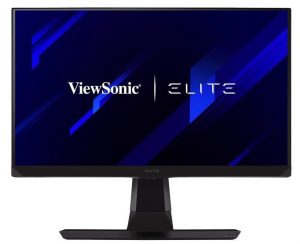
| Panel Technology | IPS |
| Screen Size | 27” |
| Display Resolution | Full HD (1920×1080) |
| Refresh Rate | 240Hz |
| Adaptive Sync Technology | NVIDIA G-Sync |
| Ports | 1 x DisplayPort 1.2 2 x HDMI 2.0 |
| Response Time | 1ms |
| Input Lag | 3ms |
The ViewSonic Elite XG270 offers one of the best displays for first-person shooters and fighting games. This monitor combines the brilliance of IPS panel technology with impeccable Motion Blur Reduction implementation to deliver a phenomenal gaming experience.
The XG270 has a Full HD resolution on a 27” screen. While this configuration isn’t ideal due to the low pixel density (81 PPI), it won’t necessarily amount to visible pixels unless you play really close to your display. Additionally, you can use anti-aliasing in games to conceal issues like the staircase effect.
The hallmark of the XG270 is its state-of-the-art Motion Blur Reduction technology called PureXP+. This feature uses backlight strobing to eliminate perceived ghosting and motion blur by reducing picture brightness. PureXP+ is so well-implemented in this monitor that it garnered the first-ever Blur Buster seal of approval.
The XG270 is equipped with a well-organized and intuitive on-screen display menu that comprises plenty of gaming features. You can easily navigate through the menu options thanks to the five-way joystick found below the bottom bezel. The ViewSonic Display Controller software is also available if you prefer using a desktop application.
Numerous picture presets for specific genres like first-person shooters, multiplayer online battle arena, and battle royale games can be enabled through either menu or the desktop application. There’s also a preset for gaming consoles, namely the PlayStation 4 and Xbox One.
In terms of design, the XG270 has a robust brushed metal stand that has extensive ergonomic options such as height adjustment, swivel, pivot, and tilt. The monitor frame also includes detachable sight shields, a mouse bungee, and a headset hook.
Low pixel density aside, the XG270 deserves to be named one of the most well-rounded monitors on the market. It delivers a responsive and immersive gaming experience thanks to a vivid panel and the exceptional implementation of backlight strobing technology. If you don’t mind the lower resolution, this monitor is a great pickup for fighting games.
Acer Nitro XF252Q
Best Competitive Monitor for Fighting Games
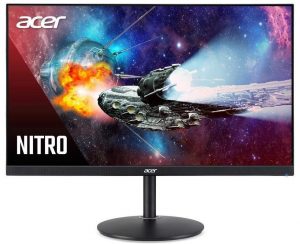
| Panel Technology | TN |
| Screen Size | 25” |
| Display Resolution | Full HD (1920×1080) |
| Refresh Rate | 240Hz |
| Adaptive Sync Technology | AMD FreeSync (48Hz-240Hz) |
| Ports | 1 x DisplayPort 1.2 2 x HDMI 2.0 |
| Response Time | 0.3ms |
| Input Lag | 3ms |
The Acer Nitro XF252Q is one of the fastest displays available on the market. It boasts a blazing fast 0.3ms response time speed and is packed with gaming features like AMD FreeSync and Motion Blur Reduction.
The XF252Q is based on the latest-generation of 240Hz TN panels. This new display technology increases pixel response time speed from the standard 1ms to 0.5ms (Acer claims to have further fine-tuned the response time speed of the XF252Q to an astounding 0.3ms). This monitor also has an imperceptible 3ms of input lag to ensure fast-paced battles in games like Tekken 7.
The Motion Blur Reduction feature on the XF252Q called Visual Response Boost uses backlight strobing to increase motion clarity. This feature can operate at fixed refresh rates (120Hz, 144Hz, and 240Hz) and is implemented extremely well. Even when the XF252Q is backlight strobing at 240Hz, you will still be getting decent brightness. However, you won’t be able to use FreeSync when Visual Response Boost is enabled.
Since the XF252Q has a Full HD resolution, it should be relatively easy to reach high frame rates in popular eSports titles like Fortnite and Counter-Strike: Global Offensive. If you want a higher-resolution monitor at around the same price point, you can get the Dell S2719DGF.
In terms of ergonomic versatility options, the XF252Q can be height adjusted, tilted, swiveled, and pivoted. This monitor also has integrated speakers that clearly aren’t suitable for its intended purpose.
Overall, the XF252Q is an excellent option if you’re looking for the fastest monitor you can get. It offers outstanding backlight strobing technology, a versatile design, and remarkable value for the price.
Alienware AW2518HF
Lowest Input Lag Monitor for Fighting Games
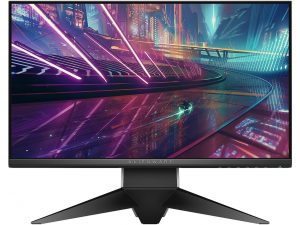
| Panel Technology | TN |
| Screen Size | 25” |
| Display Resolution | Full HD (1920×1080) |
| Refresh Rate | 240Hz |
| Adaptive Sync Technology | AMD FreeSync (48Hz-240Hz) |
| Ports | 1 x DisplayPort 1.2 2 x HDMI 2.0 |
| Response Time | 1ms |
| Input Lag | 3ms |
If you’re looking for a 240Hz TN gaming monitor for fast-paced fighting games, the Alienware AW2518HF might be for you. This monitor has a refresh rate, response time speed, and input lag performance suitable for professional players like Tfue, Shroud and Ninja to ensure that they are on top of their game.
Although the AW2518HF doesn’t quite compare to IPS and VA panel monitors in terms of image quality, it comes with an impressive picture preset out of the box. Moreover, it should be easy to push this monitor to its limits since it features a Full HD resolution.
The AW2518HF features mesmerizing AlienFX RGB lighting that can be synchronized to the content on-screen and the rest of your gaming rig. Several video games like Dying Light and League of Legends are also compatible with this technology. Moreover, the lighting complements the ultra-thin bezel design of this monitor very well.
The AW2518HF has a metal tripod stand that helps with cable management. For ergonomic functionalities, this monitor can be height-adjusted, pivoted, swiveled, and tilted. The screen also comes with a matte coating to eliminate glare.
Similar to the Asus ROG Swift PG279QZ, the AW2518HF also has pre-calibrated picture presets that meet the needs of specific genres. These presets, along with a few other gaming features, can be accessed through the intuitive on-screen display menu.
Overall, the AW2518HF is a competitively-priced 240Hz monitor with premium features and impressive gaming performance.
MSI Optix MAG241C
Best VA Monitor for Fighting Games
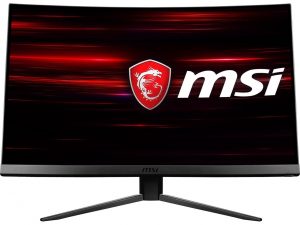
| Panel Technology | VA |
| Screen Size | 24” |
| Screen Curvature | 1500R |
| Display Resolution | Full HD (1920×1080) |
| Refresh Rate | 144Hz |
| Adaptive Sync Technology | AMD FreeSync (48Hz-144Hz) |
| Ports | 1 x DisplayPort 1.2 2 x HDMI 1.4 |
| Response Time | 4ms (1ms MPRT) |
| Input Lag | 5ms |
The MSI Optix MAG241C is an affordable 144Hz VA curved gaming monitor that features good color reproduction, deep blacks, and decent viewing angles. While its performance numbers don’t stand out on paper, this monitor makes use of cutting-edge technology to deliver a smooth and immersive experience in reality.
Slow response time speeds have always been the weakness for high-contrast VA panel monitors. This problem is especially apparent in fast-paced genres like first-person shooters and fighting games.
Fortunately, the MAG241C has devised a workaround for this issue called 1ms Moving Picture Response Time (1ms MPRT). Based on backlight strobing technology, this feature inserts a black frame between each actual frame to reduce perceived motion blur. However, you can’t enable 1ms MPRT and FreeSync at the same time, so you must remember to enable the feature only when playing fast-paced games like Forza Horizon 4 or Need for Speed Heat.
In terms of design, the MAG241C flaunts a sleek frame embedded with gamer-inspired aesthetics. The bezels are thin, and the aggressive curvature makes this monitor ideal for multi-display setups. The biggest deal-breaker would be the tilt-only stand that substantially limits this monitor’s versatility.
Despite having a Full HD resolution, the MAG241C can maintain crisp visuals thanks to the small screen that allows for sufficient pixel density (93 PPI). Having a lower resolution also makes it easier to achieve stable FPS. Additionally, this monitor comes with a flicker-free screen and a built-in low blue filter to protect your eyes when you play for long durations.
The MAG241C has a FreeSync range of 48Hz-144Hz, making it prone to stuttering at lower frequencies. To address this issue, MSI employs Low Framerate Compensation technology to increase the monitor’s refresh rate and ensure a smoother gaming experience. However, you must take into account that you can’t enable this feature together with 1ms MPRT.
If you’re interested in genre-specific picture presets, the MAG241C has plenty. These include display settings for first-person shooters, real-time strategy, racing, and role-playing games. You can enable these presets along with other useful options through the on-screen display menu.
The menu can be accessed through the joystick positioned at the back of the monitor or via the desktop application. You can also calibrate the display settings from your smartphone through MSI Optix for Android.
How to Choose the Best Monitor for Fighting Games
Gaming monitors come with various capabilities that cater to specific genres. For instance, a high refresh rate display is excellent for first-person shooters and battle royales, but it isn’t necessary for strategy or simulation games. Consequently, low input lag is essential for fast-paced genres like platform and fighting games.
You should also check if a monitor is appropriate for your gaming system. Having a 144Hz display is pointless if your rig can barely achieve 60 FPS in most games.
Response Time and Input Lag
Input lag and response time is often interchanged, but they represent very different things:
- Input lag: Measures the delay between the time you enter a command on your keyboard, mouse, or controller, and the time it registers on your monitor.
- Response time: Indicates how fast a pixel can go from black to white and back again on your monitor.
Low input lag is crucial in genres where fractions of a second matter. In fighting games, for instance, you want your monitor to register commands immediately when performing button combinations for special moves.
Manufacturers don’t usually disclose the amount of input lag their monitors produce, but websites like Display Ninja and RTINGS use dedicated tools to measure this delay. Ideally, your monitor should have no more than 10ms of input lag.
While fast response time isn’t as valuable as low input lag, it has a significant effect on your visual experience. Monitors with a response time speed of over 5ms tend to display blurry images with noticeable ghosting.
Thus, the ideal gaming monitor for fighting games should have minimal input lag and decent response time. Considering both these factors, you can practically choose from any of the monitors listed above. But if you’re keen on supplemental factors like refresh rate, panel technology, and adaptive sync, continue reading this guide.
Refresh Rate
Refresh rate indicates the frequency with which an image is redrawn from your monitor. In essence, it is the number of frames your screen can display in a second. The higher the refresh rate, the smoother your visuals will appear.
Most fighting games run at 60 FPS, so a monitor with a 60Hz-75Hz refresh rate should be good enough. However, you should seek 120Hz-240Hz displays if you’re going to play other genres like first-person shooters or battle royale games. Additionally, getting a higher refresh rate is an excellent way to keep your gaming system future-proof.
Another thing you should consider is the capability of your system to achieve high frame rates. Buying a 144Hz monitor is pointless if you’re going to play on a console that can only produce 30 FPS on most games.
Panel Technology
The factors we’ve covered above are heavily dependent on the panel technology of a monitor. Knowing the difference between the three types of panel technology gives you an idea of how a display will perform and simplifies your search for the best monitor for fighting games.
IPS vs. TN vs. VA
Choosing the ideal panel technology is a dilemma between superior image quality or better responsiveness. IPS is recommended for people who want unmatched color accuracy and wide viewing angles, while TN is more suited for those who need the highest refresh rates and fastest response times. VA is somewhat of a middle ground between IPS and TN. It offers image reproduction that is close to IPS while providing competitive response times similar to TN.
Display Resolution
You should also consider the display resolution when choosing a new gaming monitor. Although Full HD (1920×1080) remains to be the most popular and budget-friendly option, Quad HD (2560×1440) and 4K (3840×2160) are consistently gaining market shares.
Full HD vs. Quad HD vs. 4K
Both Quad HD and 4K provide stunning in-game visuals that are simply unachievable with Full HD. Even 4K on the lowest graphics settings is far better than Full HD on ultra settings. However, gaming in these newer resolutions can be very expensive. Buying components that can achieve 4K at 60 FPS on the latest games will cost you thousands of dollars.
If you have a Full HD gaming system that consistently exceeds 60 FPS on the highest graphics settings, it may be a good idea to upgrade to a Quad HD monitor. You can also check benchmarks from reputable sources to see if your current rig can handle Quad HD or 4K resolution.
Unless you’re building an entire gaming system from scratch, your choice of display resolution all boils down to your preferences, budget, and available computing power.
Screen Size
Your choice on screen size should also depend on the display resolution you’re getting from a monitor. That’s because a display resolution can only accommodate up to a suitable screen size before the quality declines. For example, the known sweet spot for Full HD monitors is 24″ (anything larger, and you’ll start seeing individual pixels and unsightly aliasing).
On the other hand, 4K monitors can produce sharp images for much larger screens without sacrificing pixel density (the sweet spot for this resolution is around 32″). If you play close to your display, consider a 27″ screen to avoid straining your eyes.
Variable Refresh Rate Technology
Adaptive Sync is the standard for variable refresh rate established by the Video Electronics Standards Association (VESA). It is a technology that allows monitors to adjust to the frame rate being rendered by a graphics card to provide the maximum FPS without screen tearing, stuttering, and judder. Graphics card manufacturers AMD and NVIDIA both take advantage of Adaptive Sync, but take very different approaches in marketing this technology.
G-Sync vs. FreeSync
FreeSync is AMD’s implementation of VESA Adaptive Sync. It essentially uses the same standards as Adaptive Sync but with a more catchy marketing name. While monitor manufacturers are required to comply with additional certification to advertise a panel as FreeSync, it is relatively minor. Furthermore, manufacturers can use any scaler module they want, often limiting the supported frame rate range (i.e., 40-75 FPS).
On the other hand, NVIDIA is much more strict with their licensing for G-Sync. That’s because they use a proprietary scaler module, that is, in most cases, more effective than FreeSync. This module allows G-Sync monitors to support an exceptionally wide frame rate range (i.e., 1-240 FPS).
Quick Recap
Top 8 Best Monitors for Fighting Games
- LG 27GL850-B – Best G-Sync Monitor for Fighting Games
- Acer Predator XB273K – Best 4K Monitor for Fighting Games
- Asus ROG Swift PG279QZ – Best Premium Monitor for Fighting Games
- Dell S2719DGF – Best 144Hz Monitor for Fighting Games
- ViewSonic Elite XG270 – Best 240Hz Monitor for Fighting Games
- Acer Nitro XF252Q – Best Competitive Monitor for Fighting Games
- Alienware AW2518HF – Lowest Input Lag Monitor for Fighting Games
- MSI Optix MAG241C – Best VA Monitor for Fighting Games
Bottomline
Ultimately, low input lag is the most important determining factor when choosing the best monitor for fighting games. If that were your only concern, then all the panels above will pass your standards with flying colors. Which particular gaming monitor piqued your interest? Share your thoughts below!


